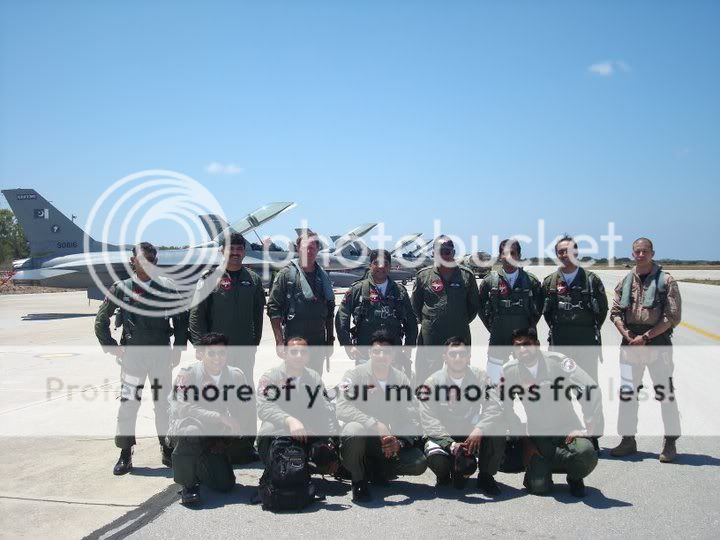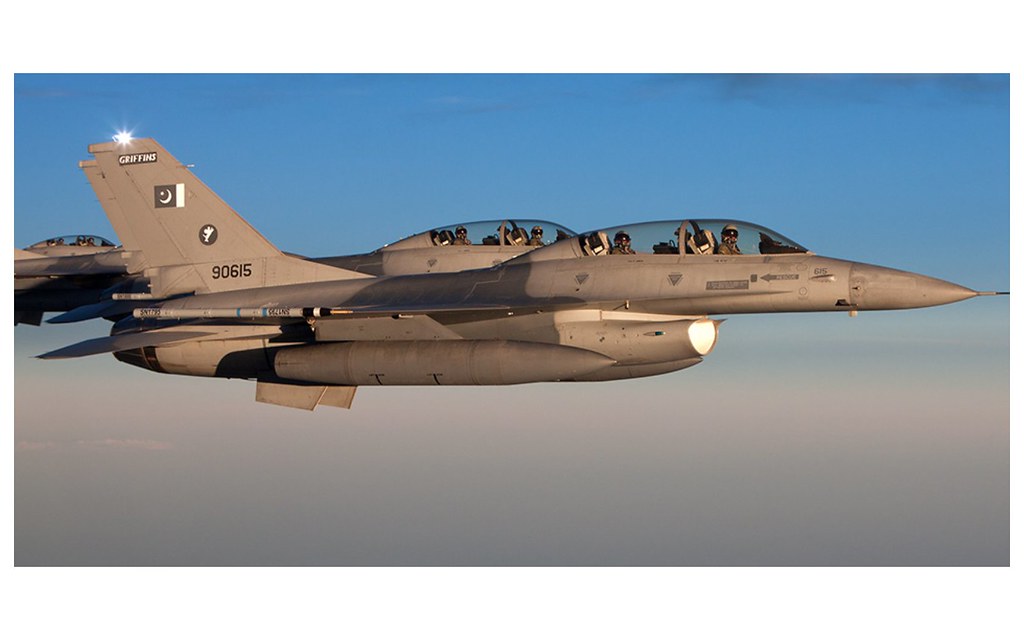ynmian
FULL MEMBER

- Joined
- Dec 18, 2010
- Messages
- 115
- Reaction score
- 0




Pictures courtesy: Shazib Mehmood
"Shazib Mehmood" means the the great pilot in pictures?
Follow along with the video below to see how to install our site as a web app on your home screen.
Note: This feature may not be available in some browsers.





Pictures courtesy: Shazib Mehmood

Great pictures i must say!
The guy in the second seat (Last Pic) seems to be chilling, while plane is being refueled.....
How about PAF gets the KC-135 for its F-16 refueling....i mean we can't have IL-78 do all the job. Perhaps this exercise will highlight the importance of air refuelers...



In order to fly the F-16 in Pakistan, you must first display tremendous skill in flying one of our other platforms, namely the Mirage III/V, F-7 or (previously) the A-5 Fantan. It is considered to be a great honor to fly the front-line fighter of the PAF. Hence, the only group of pilots that could be considered more "elite" than those flying the F-16s are the ones flying the JF-17s.
That said, it is common that the pilots who are sent to such exercises are a mix of new converts and veterans. You want the veterans there so that they may decipher the strategies and tactics of other participants in great detail while refining their own, and you want the younger pilots to be there in order to pass on that knowledge for as long as possible. Expect many of these pilots to be teaching in the Combat Commander's School in the future.
30 or 30 to 40 is still young, man, but its common to have an f16 pilot ranging from 35 to 50 years etc. (correct me if i am wrong).
you are right that for the time being jf-17 are considered to be elite pilots, BUT nothing compared to f16, and i guess with the arrival of f16 block 50/52, those pilots will be considered as more elite

Just to add, I think the most "elite" group of pilots in the PAF don't fly either the F-16 or the Mirage, but the F-7, namely the instructors of the Combat Commanders School. This school is designed primarily to pass on the experience and "spread the knowledge", as blain2 put it, to all squadrons.You are right but I think elite is not just the purview of the F-16 sqns only. I think it is a given that those with the most promise and talent are sent off to the F-16 conversion but once these pilots have gained experience , many times they are sent over to other sqns to spread the knowledge around about a very capable AI radar equipped platform.
Just to add, I think the most "elite" group of pilots in the PAF don't fly either the F-16 or the Mirage, but the F-7, namely the instructors of the Combat Commanders School. This school is designed primarily to pass on the experience and "spread the knowledge", as blain2 put it, to all squadrons.
Also, I think there are plans to switch over from the F-7 to the JF-17 within two years. Please correct me if I am mistaken.

"Shazib Mehmood" means the the great pilot in pictures?




2 questions:
1. who could have taken these pictures?
2. on the canopy starboard side, is that a file or chart which is lying on the panel (right side of HUD)
i believe with enough vipers under induction, there is a possibility for a F-16 conversion squadron to be based at mianwali. in war-time it would convert to whatever role assigned to it - PAF has a 'abundance' of two-seat vipers in its inventory.

The thing on the canopy looks like a paper inserted in a plastic bag and scotch taped on Canopy.Looks like a True Pakistani Innovation called "Jugaar"..
The pilot may well be using some kind of checklist for refueling operation or something else..

The thing on the canopy looks like a paper inserted in a plastic bag and scotch taped on Canopy.Looks like a True Pakistani Innovation called "Jugaar"..
The pilot may well be using some kind of checklist for refueling operation or something else..
The stars of this Flag were undoubtedly the Pakistan Air Force with their F-16Bs. This is the first time they have participated in a Red Flag exercise and they bought six jets and around 100 ground support personnel with them. They flew to Nellis AFB via Lajes Field AFB in the Azores and were hosted on the stopover by the 65th Operations Support Squadron. This was the first time the Pakistan Air Force have ever used this base as a transit point. All the pilots were well trained in advance for the long transatlantic crossing that was seen as a symbolic leg for this huge undertaking.
During the first seven days two sorties with four aircraft were flown each day. Surprisingly one of the airframes did not fly at all and one other flew only one mission, so the remaining four jets were used almost exclusively, which is a testament to the reliability of the aircraft and the skill of the maintenance crews.
These particular F-16Bs are block 15 machines and were part of the final production run of 40 B models. They were delivered in the early 1980s and, after initial aircrew training at Hill AFB, UT, were delivered to Pakistan between 1983 and 1986. US embargoes later on in 1990 would mean that parts and support would dry up, but the ever-resourceful Pakistanis still managed to keep all their western equipment flying. This embargo, called the Pressler Amendment, also stopped an order of 71 newer F-16s that had been already ordered, with the completed airframes ending up in AMARC. These aircraft would eventually find their way to the US Navy in 2002 for use as aggressors at NAS Fallon with NSAWC; these were a mixture of A and B models. This embargo has since been lifted and new C/D models have now started to arrive in Pakistan.
<edit>
We continued our track waiting for our next customers, the Pakistan Air Force with their F-16s. About 45 minutes later the small swarm of four aircraft appeared and formed up on our port wing. Unfortunately the side windows in this aircraft have suffered the scratches from photographers that have had filters attached to their lenses, with the result being that they are nigh on impossible to shoot through as there are literally no clear patches. I had already spoken to the crew on the ground about shooting over the back of their cockpit seats through the side windows and they said this was not a problem. This was my saving grace and my pilot also asked the aircraft if they could move forward in their formation so that photos could be taken. So while the first aircraft took the boom the remaining three formated for me just as the light was becoming really soft, with the sun almost ready to set.
I went back to the boomer's position to shoot number two as he was fueling and also caught number three as he positioned for the boom. Then it was back to the cockpit to catch them in formation on the starboard wing. When they were finished our pilot asked if I wanted them to ask the Pakistanis to do anything. I replied that if they could move forward again just as they had done on the port side that would be perfect, if of course they had the time to spare before their next part of the mission. They did this in glorious sunset light, both backlit with the red sky and, after the turn, with the light shining perfectly on the airframes. Perfect!


And whats the point in looking towards the camera when nobody can see their faces


2 questions:
1. who could have taken these pictures?
2. on the canopy starboard side, is that a file or chart which is lying on the panel (right side of HUD)
